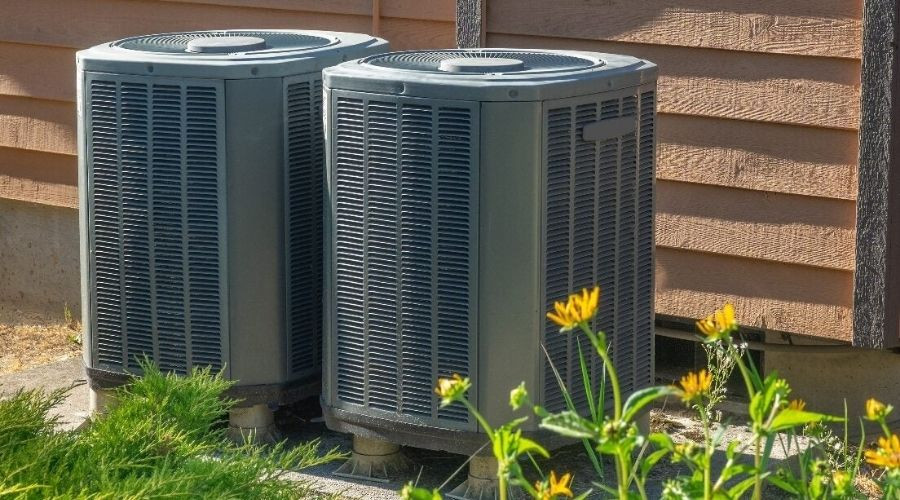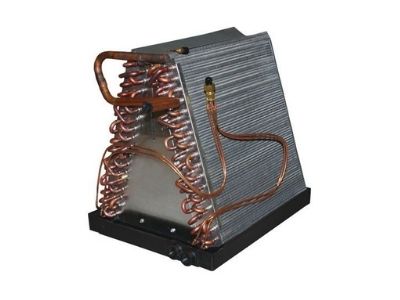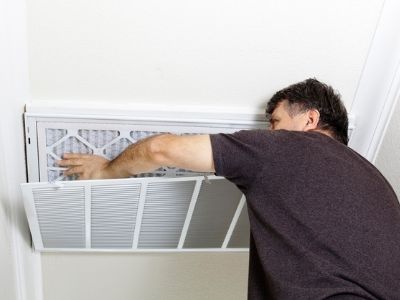What Does HVAC Stand For?
- Heating
- Ventilation
- Air
- Conditioning
HVAC is an abbreviation for heating, ventilation, and air conditioning. Heating and air conditioning refer to the temperature control of indoor spaces, and ventilation refers to the circulation of air through the home and indoor air quality.
The HVAC industry has worked diligently to develop the efficient HVAC units found in modern homes. Heating, cooling, and ventilation are important parts of maintaining a healthy and comfortable home. In this blog post, HVAC experts share the basics that homeowners should know about heating, ventilation, and air conditioning units.
How Does an HVAC System Work?
Homeowners should have a basic overview of how their HVAC system works. Most modern homes use a central air system, which distributes air to each room in the house through ductwork. HVAC systems include furnaces for heating and air conditioners for cooling the home.
Modern home furnaces burn oil, gas, or propane to produce heat. Some heating systems use electricity or geothermal transfer to heat the home. Heat pump systems are extremely efficient for homes in moderate climates.
Ventilation is the part of the HVAC system that pushes the air throughout the home. The ventilation system includes components such as fans, vents, air filters, and ductwork. Ventilation is important for maintaining healthy indoor air quality and distributing air.
Important Parts of the HVAC System
- Thermostat
- Ductwork
- Evaporator coil
- Heat pump
- Furnace
- Air Filters
The thermostat controls the overall function of the HVAC system by turning on the heating or cooling to maintain the desired temperature. The furnace and air conditioner connect to ductwork that distributes the air through vents at the thermostat’s command.
Most homes have both an indoor and outdoor component to their HVAC system. Air conditioners use evaporator coils containing refrigerant to cool the air, and then the heat and moisture are released via the outdoor unit.
The ventilation of the HVAC system would not be complete without an air filter. An air filter is a mesh screen placed over the HVAC unit’s air intake to keep debris such as dust, dirt, and pet hair from getting sucked into the unit. Air filters are essential for protecting the indoor air quality inside the home. They should be replaced around every three months or more frequently, depending on the filter type or if allergy sufferers live in the house.
What Is HVAC Maintenance?
One of the best things homeowners can do for their HVAC systems is schedule routine HVAC maintenance with a qualified expert. Homeowners should always have a trusted local HVAC company a phone call away in case of an HVAC emergency.
HVAC maintenance appointments include cleaning the air conditioning coils, changing the air filters, cleaning the inside of the unit, and checking for broken parts. During maintenance appointments, the technician will have a chance to fix small problems early before they get out of hand.
Most HVAC maintenance should be left up to a qualified HVAC technician, but homeowners can change their air filters themselves. Changing an air filter at homet can take less than ten minutes. Changing the air filter on time can improve the performance and longevity of the HVAC system.
About Stonebridge Heating & Air Conditioning
Stonebridge Heating & Air Conditioning has over 20 years of experience serving its neighbors in Tyler, TX, and the surrounding areas. They offer straightforward pricing, 24-hour emergency services, financing, and a membership that includes perks like discounts and routine maintenance on heating and air conditioning units. Call them today for heating or air conditioning services in Tyler, TX.
[press_release_images][/press_release_images]
[press_release_distributions id=”113397″][/press_release_distributions]





